2015 Hyundai Sonata Review – Video

The 2015 Hyundai Sonata has big shoes to fill as the last generation model practically revolutionized the mid-sized sedan segment. With eye-catching styling, Hyundai proved that mainstream cars can be attractive.
FAST FACTS
| Engine: 2.4-liter four-cylinder engine makes 185 horsepower and 178 lb. ft. of torque, 2.0-liter turbocharged engine make 245 horsepower and 260 lb. ft. of torque, while Eco models use a 1.6-liter turbocharged engine makes 177 horsepower and 195 lb. ft. of torque. |
| Transmission: six-speed automatic, seven-speed dual clutch transmission for Eco Models. |
| Fuel economy: 2.4L: 25/37/29 (city/highway/combined). 2.0T: 23/32/26 (city/highway/combined). 1.6T: 28/38/32 (city/highway/combined). |
| Price: Hyundai Sonata SE model for just under $21,960, while a fully loaded Sonata Sport 2.0T with the Ultimate package costs under $34,335 |
Fast-forward to today and it’s clear that Hyundai’s impact is felt throughout the industry. Almost every manufacturer enhanced its mid-sized sedan styling. While competitors were focused on styling, Hyundai set out to refine the Sonata by blending premium appeal with mid-size sedan practicality.
With a look that follows in the footsteps of the new (and well received) Genesis Sedan, the Sonata adds some key exterior highlights. A trunk-lid spoiler and LED daytime running lights are now standard while trim level are more separated and better defined. Limited models feature liberally applied chrome accents, while Sport models have a blacked-out portion on the front bumper, under the grille. Both outfits suit the Sonata though it’s clear the company isn’t looking to stun the world with exterior design.
Emphasis on a Premium Interior
It looks like Hyundai benchmarked the Sonata against premium brands rather than direct competitors like the Toyota Camry or Honda Accord. It seems like Hyundai applied some of the same design in this car that it used for the second-generation Genesis luxury sedan. Mind you the premium materials are used more sparingly here than there. Soft touch fabrics are only found in key locations like the door handles and controls. Eye-catching trim pieces are throughout the trim range: Limited models can be equipped with wood accents that look posh, if a little Buick-esque while Sport models feature faux carbon fiber inserts.
Get the Flash Player to see this player.
Hyundai tweaked the interior design to achieve improved ergonomics. The result is a horizontal HVAC and multimedia stack angled toward the driver with a more upscale look than the previous vertical setup. Even the steering wheel was revised for better ergonomics. It works, as the car feels a bit more engaging, just by having a thicker wheel.
Well Equipped as Usual
Design isn’t the only standout in the cabin. The number of features available is impressive. There are available heated and cooled front seats, heated rear seats, a panoramic sunroof and segment-exclusive rear sunshades. You can upgrade the multimedia head unit between two touch-screen audio setups, with the ultimate option featuring a seven-inch touch-screen and the Hyundai BlueLink telematics system. Using this system Sirius XM subscribers can even record live radio to listen again later. Hyundai also promises Apple CarPlay support and Android Auto compatibility in the near future that will allow users to let their smartphones to further enhance their infotainment experience with brought in apps, locations and improved integration between the phone and the car.
But that’s not the end of the story when it comes to technology, as the new Sonata is available with several driver assistance features. Some items have been seen in other cars in the segment, like the adaptive high beams, while other features are a twist on what we’ve already experienced, like the smart-key with an automatic trunk opening. Seen before on the premium Genesis Sedan, the car will automatically unlock and open the cargo area without having to wave your foot under the bumper, just keep the key in your pocket and stand by the rear end of the car and it pops open.
Another unique twist is the lane-change assist, which uses the blind-spot assist and parking sensors to detect if you’re at risk of cutting someone off. The system will determine if a car is closing in on your lane-change space or not and alert you with a distinct noise that urges you to rethink your lane change maneuver. These features are available on the Sport trim with the $1,700 premium package, and come standard on Limited trim levels, while a smart cruise control with the capability to bring the car to a full stop is available on Limited models with the $5,050 Ultimate package.
Less Power, Better Handling
For this generation, Hyundai revised the suspension was to provide comfortable yet sportier handling. The 2.0-liter turbo model features slightly different electric power steering that feels far more natural than past Hyundai models, which are frequently criticized for poor on-center feel and a vague sense of direction. Even the 2.4- and 1.6-liter turbo models have improved steering feel, especially when the car is put into “Sport” mode. Each drive mode affect engine responsiveness, shift points and steering weight. The differences between the three available drive modes (Sport, normal and Eco) are quite noticeable, allowing you to tailor your driving experience.
Hyundai also revised the engines, but instead of upping the horsepower and torque in the 2.4-liter and two-liter turbo models Hyundai decreased output. The 2.4-liter model makes five horsepower less, while the turbo model loses almost 30 hp. That decrease is supposed to make peak power more easily accessible. While the engines don’t feel particularly powerful, they both offer smooth acceleration and are both relatively quiet.
We also had some time with a pre-production Eco model, a new trim level in the Sonata lineup that uses a small 1.6-liter turbocharged engine and a seven-speed dual clutch transmission. The 177 hp and 195 lb-ft of torque from the engine was solid and peppy, although the dual-clutch transmission still has a few kinks to work out at slower speeds where it’s jerky and lacks finesse.
Pricing
The Sonata is available in three trims: SE, Sport and Limited. SE models start at $21,960 without options and comes with 16-inch alloys, LED daytime running lights and a spoiler as well as Bluetooth connectivity. Sport models start at $23,985 and get 17-inch alloy wheels, automatic headlights, a 10-way power driver seat, a five-inch touch-screen for multimedia, heated front seats and sportier exterior accents like dual chrome exhaust tips. For $27,335, Limited models come with a few more convenience features including lane departure warning, heated rear seats and leather upholstery.
Models with turbocharged engines have trim levels of their own: 2.0T Sport trim levels come in at $29,385 and feature all the bits and pieces from the Sport trim model while adding 18-inch alloy wheels, paddle shifters, a sportier suspension setup, bigger brakes, a quad exhaust setup and even more. Eco models start at $24,085 and expand upon the feature set of SE models.
Different packages are available for each trim level – and many are tied together, meaning in order to get the Technology Package on Sport models, you also have to get the Premium package. A fully loaded model is known as the 2.0T Sport with the ultimate package and costs $34,335.
The Verdict:
Instead of pushing their luck and making the Sonata stand out again, the folks at Hyundai decided to refine their offering, a good decision seeing how the old car sold past the 200,000 units per year mark for three consecutive years. The result is this car that rides confidently, provides solid driver feedback and is a far more hospitable place to sit in than before. Add in the huge list of features and the Sonata will easily put the competition on guard again.
LOVE IT
- Improved Interior
- Available Features
- Solid Steering Feel
- Confident handling
LEAVE IT
- Toned down styling
- Unexciting Engines

Sami has an unquenchable thirst for car knowledge and has been at AutoGuide for the past six years. He has a degree in journalism and media studies from the University of Guelph-Humber in Toronto and has won multiple journalism awards from the Automotive Journalist Association of Canada. Sami is also on the jury for the World Car Awards.
More by Sami Haj-Assaad
















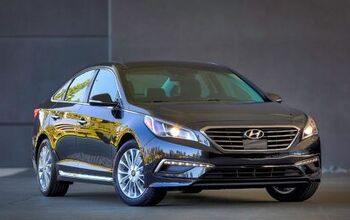
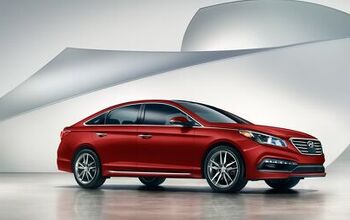
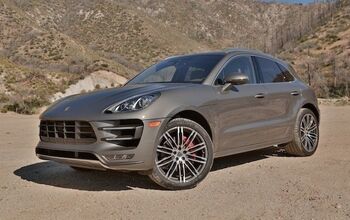


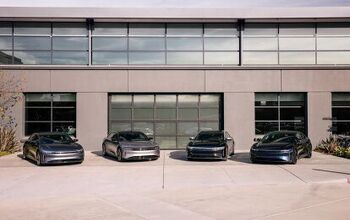


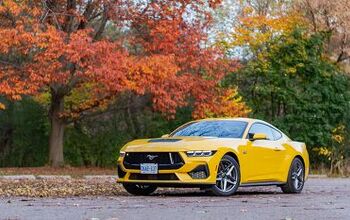





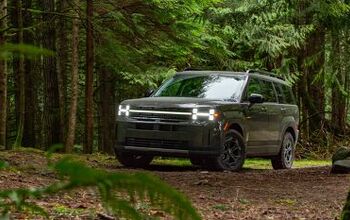
Comments
Join the conversation